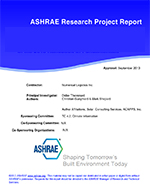Description
Automobile parking garages can be partially open or fully enclosed. Partially open garages are typically above-grade with open sides and do not need generally mechanical ventilation. However, fully enclosed parking garages are usually underground and require mechanical ventilation systems. Indeed, in absence of ventilation, enclosed parking facilities present several indoor air quality problems. The most serious is the emission of high levels of carbon monoxide by cars within the parking garages. Other concerns related to enclosed garages are the presence of oil and gasoline fumes, and other contaminants such as oxides of nitrogen and smoke haze from diesel engines.
Airborne contaminants disperse throughout enclosures in a complex manner that depends on several factors including:
- the effect of the heating, ventilating, and air-conditioning (HVAC) systems;
- the air leakage characteristics of the enclosure;
- the removal, by filtration or contribution by generation, of contaminants;
- the chemical reaction, radio-chemical decay, settling, or sorption of contaminants.
To further complicate the analysis of the indoor air quality in enclosures, all of the factors listed above can occur simultaneously. A clear understanding of how the various factors influence indoor air quality is important to develop a set of design guidelines for ventilating enclosed parking facilities.
Based on the literature review, it was found that the ventilation requirements for enclosed parking garages in other countries differ from those sets by the ASHRAE standard 62-1989 in the US.
Product Details
- Published:
- 1999
- Number of Pages:
- 73
- File Size:
- 1 file , 2.1 MB
- Product Code(s):
- D-28848




